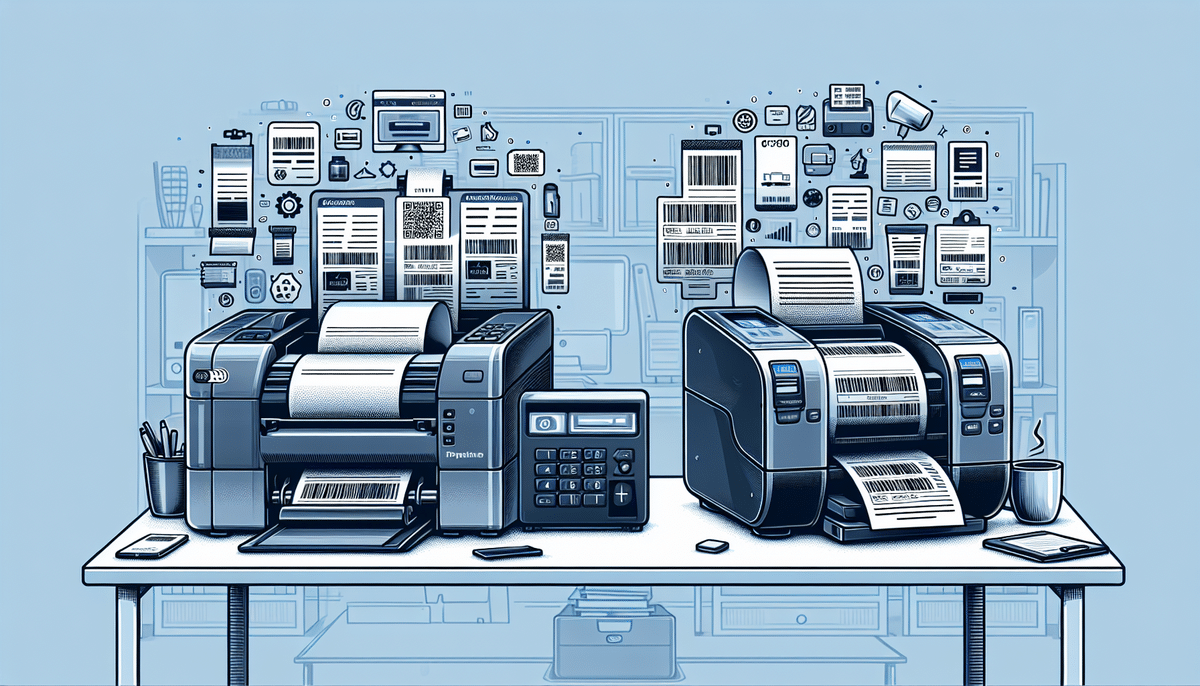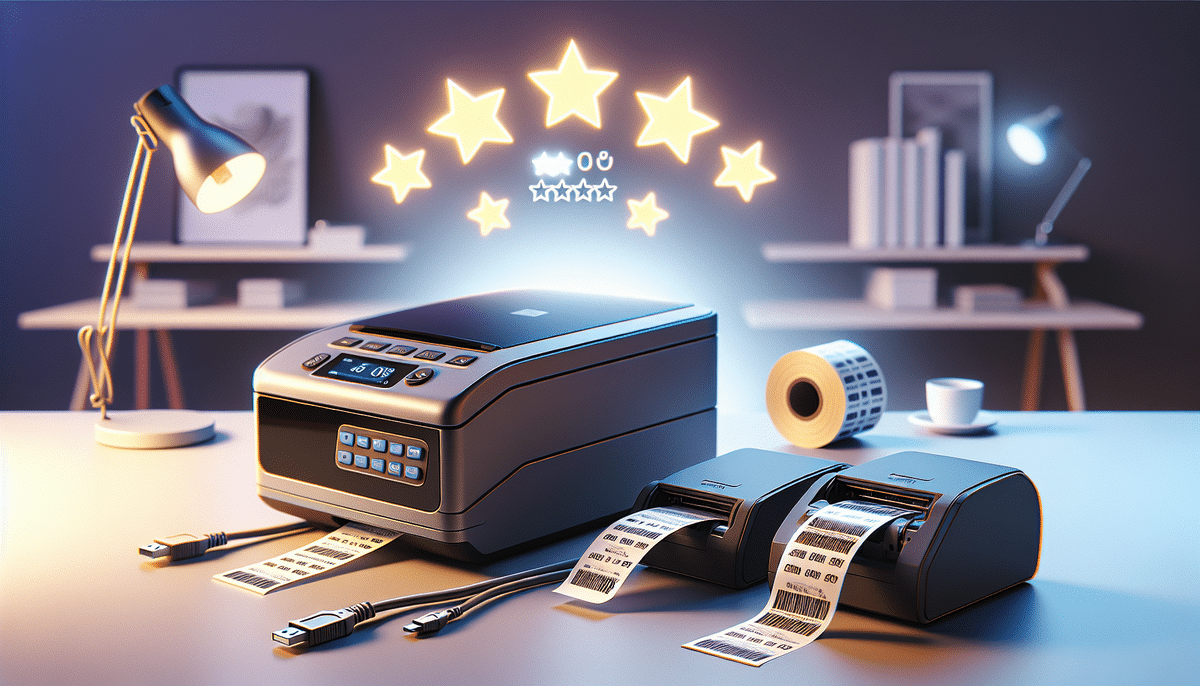DYMO LabelWriter 450 Turbo vs. Rollo Label Printer: Comprehensive SEO Optimized Comparison
Are you in the market for a new label printer but unsure which one to choose? This detailed comparison between the DYMO LabelWriter 450 Turbo and the Rollo Label Printer will help you navigate their features, specifications, and performance metrics. We'll explore aspects such as design, printing speed, connectivity options, software compatibility, print quality, and cost-effectiveness. By the end of this guide, you'll be equipped with the knowledge to make an informed decision that best fits your labeling needs.
Understanding Label Printers
Label printers are indispensable tools for creating professional-quality labels used in various applications, including shipping, barcode creation, inventory management, and product identification. They are particularly beneficial for businesses that require the efficient production of large volumes of labels. By comprehending the functionalities and features of different label printers, you can select the optimal device tailored to your specific requirements.
Overview of DYMO LabelWriter 450 Turbo
The DYMO LabelWriter 450 Turbo is renowned for its high-speed label printing capabilities, delivering up to 71 labels per minute. It utilizes thermal printing technology, eliminating the need for ink or toner by using thermal labels instead. This printer supports label widths up to 2.2 inches and comes with built-in templates, simplifying the label creation process. Compatibility with both PC and Mac systems is ensured through a USB connection.
Additionally, the DYMO LabelWriter 450 Turbo offers extensive label customization via the included DYMO Label software. Users can integrate graphics, logos, and barcodes into their labels, with the software also supporting batch printing for enhanced efficiency. This versatility makes the LabelWriter 450 Turbo an excellent choice for small businesses, home offices, and personal use.
Overview of Rollo Label Printer
The Rollo Label Printer stands out with its robust thermal printing capabilities, boasting a printing speed of up to 150mm/s (approximately 4 labels per second). It supports larger label widths of up to 4.1 inches and includes built-in label templates for user convenience. The Rollo connects via USB or Ethernet, offering flexible connectivity options suitable for various business environments.
Delivering high-resolution prints at 203 DPI, the Rollo Label Printer ensures crisp and clear labels. It's designed to handle a wide array of label types, including shipping, barcode, and product labels. The user-friendly software facilitates easy customization, making the Rollo an ideal choice for businesses of all sizes aiming to optimize their labeling processes.
Comparative Analysis: DYMO LabelWriter 450 Turbo vs. Rollo Label Printer
Design and Build Quality
Both printers feature compact, desktop-friendly designs. The DYMO LabelWriter 450 Turbo measures 7.3 x 5.3 x 5.6 inches, while the Rollo Label Printer is slimmer at 7.7 x 3.3 x 3.3 inches. The LabelWriter displays a sleek, all-black design, whereas the Rollo sports a predominantly white appearance with blue accents. Notably, the LabelWriter includes a built-in label peeler, enhancing efficiency for large print jobs, while the Rollo's industrial-grade metal frame supports a larger label roll capacity.
Performance and Printing Speed
The Rollo Label Printer surpasses the DYMO LabelWriter 450 Turbo in terms of speed, printing up to 4 labels per second compared to the LabelWriter's 71 labels per minute. This makes the Rollo more suitable for high-volume printing needs. However, the LabelWriter supports wider labels up to 2.2 inches, which may be preferable for certain applications.
According to industry reports, thermal printers like these offer faster and more reliable performance compared to ink-based printers, reducing downtime and increasing productivity (Printec).
Connectivity Options
Connectivity is a critical factor in label printing. The DYMO LabelWriter 450 Turbo offers both USB and Wi-Fi connectivity, enabling wireless printing from multiple devices within an office environment. In contrast, the Rollo Label Printer provides USB and Ethernet connectivity, which is advantageous for businesses needing to print labels across multiple computers within a network.
According to a study by Business.com, having multiple connectivity options can significantly enhance the flexibility and scalability of label printing operations.
Software Compatibility
Both printers are compatible with leading label printing software. The DYMO LabelWriter 450 Turbo utilizes DYMO Label software, allowing for the inclusion of graphics, logos, and barcodes. The Rollo Label Printer offers software that supports direct label printing from Excel spreadsheets, streamlining repetitive label tasks.
Integration with major e-commerce platforms like Shopify, Etsy, and Amazon is supported by both printers, facilitating effortless printing of shipping labels and barcodes directly from your online store.
Print Quality
Print quality is paramount for professional labels. Both the DYMO LabelWriter 450 Turbo and the Rollo Label Printer deliver high-quality prints with sharp text and clear graphics. The Rollo offers a higher DPI of 203 compared to the LabelWriter’s standard DPI, which may result in slightly sharper prints. However, both printers are highly regarded for their reliable performance in producing professional-looking labels.
According to TechRadar, DPI (dots per inch) is a crucial factor in determining print clarity, and both printers meet the industry standards for most labeling needs.
Cost-Effectiveness
Price is a significant consideration when choosing a label printer. The DYMO LabelWriter 450 Turbo is generally more affordable, priced around $130, making it a budget-friendly option for small businesses and personal use. The Rollo Label Printer, however, costs approximately $180. While the initial investment is higher, the Rollo's superior printing speed and larger label capacity may offer better long-term value for businesses requiring high-volume or larger-scale labeling solutions.
When evaluating cost-effectiveness, it's essential to consider not just the purchase price but also the operational costs and potential productivity gains. According to Business News Daily, investing in a higher-quality printer can reduce long-term costs through increased efficiency and lower maintenance needs.
Warranty and Customer Support
Both the DYMO LabelWriter 450 Turbo and the Rollo Label Printer come with limited warranties. The LabelWriter offers a 2-year warranty, providing extended coverage and peace of mind. On the other hand, the Rollo Label Printer includes a 1-year warranty. In addition to warranty coverage, both manufacturers provide customer support to assist with any issues, ensuring that users receive the necessary help to maintain their label printing operations effectively.
Access to reliable customer support can significantly impact the overall user experience, as highlighted by Forbes.
Conclusion: Which Label Printer Should You Choose?
Choosing between the DYMO LabelWriter 450 Turbo and the Rollo Label Printer ultimately depends on your specific needs and priorities. If your primary requirement is to print larger labels with widths up to 4.1 inches at faster speeds, the Rollo Label Printer is the superior choice despite its higher price point. It is ideal for businesses that need high-volume printing and greater scalability.
Conversely, if you are seeking a more affordable option that still offers reliable performance, sufficient label width for most applications, and extended warranty coverage, the DYMO LabelWriter 450 Turbo is an excellent choice. It is particularly well-suited for small businesses, home offices, and personal use.
Both printers offer robust features, compatibility with popular software, and seamless integration with major e-commerce platforms, making them suitable for a variety of business sizes and types. Assess your labeling volume, label size requirements, budget, and connectivity needs to determine which printer aligns best with your business objectives.
Tips for Choosing the Right Label Printer for Your Business
- Assess Your Labeling Needs: Determine the types and sizes of labels you frequently print, as well as the volume required.
- Evaluate Printing Speed: Consider how quickly you need labels to be printed to meet your operational demands.
- Consider Connectivity Options: Decide whether you need wireless printing, Ethernet connectivity, or USB-only connections based on your office setup.
- Check Software Compatibility: Ensure the label printer is compatible with your preferred labeling software and e-commerce platforms.
- Factor in Budget: Balance the initial cost of the printer against its features, operational costs, and potential long-term benefits.
- Read Reviews and Seek Recommendations: Look for reviews from other businesses to gain insights into the printer's performance and reliability in real-world scenarios.
- Verify Warranty and Support: Opt for printers that offer comprehensive warranty coverage and reliable customer support to safeguard your investment.
By carefully evaluating these factors, you can select a label printer that not only meets your immediate needs but also supports your business's growth and efficiency in the long run.








